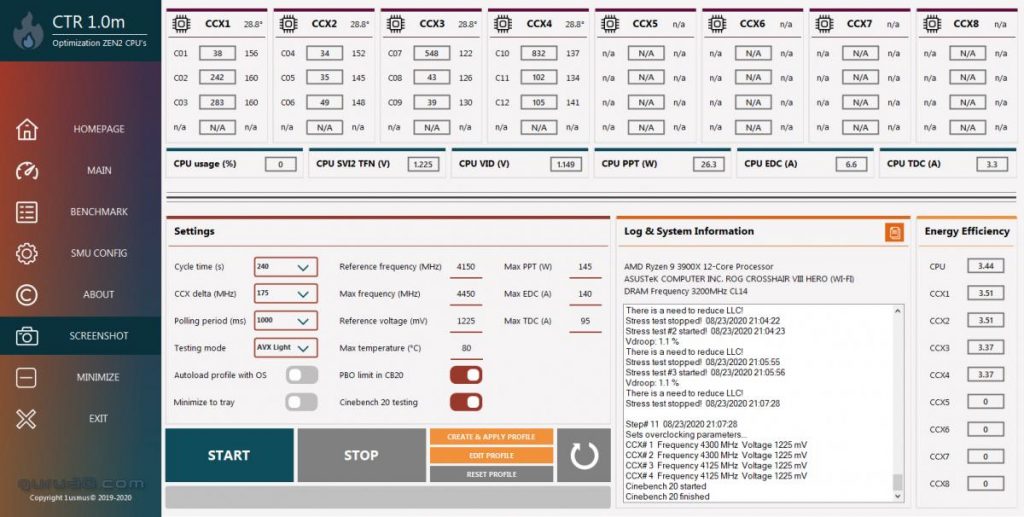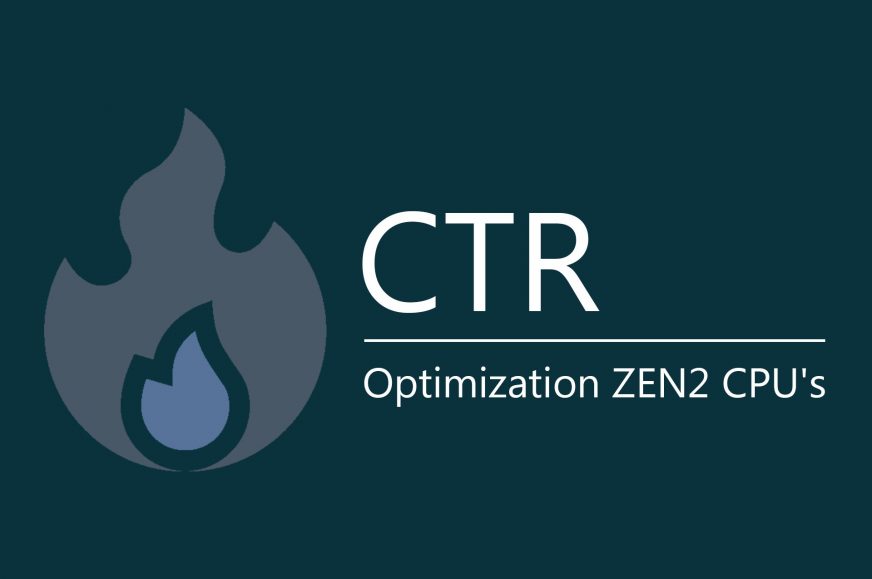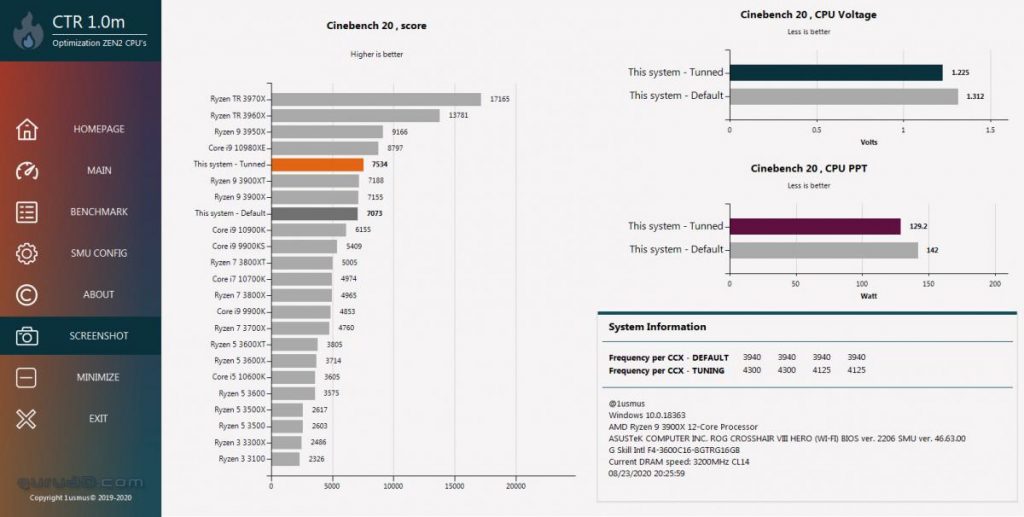ClockTuner for Ryzen: a program automatically increasing the performance of individual CCX blocks in Ryzen 3000 processors and at the same time reducing voltage and consumption
Overclocking and tweaking performance on Ryzen is not an easy thing because, compared to the automatic boost, it cannot often squeeze too much extra and silicon does not have large reserves. But if you are not satisfied with a “stock” processor, you will now be able to use automated OC. The new ClockTuner tool will allow you to automatically undervolt Ryzen 3000 CPUs or automatically overclock them, separately for both CCX blocks.
ClockTuner for Ryzen (abbreviated as CTR) is a program developed by Yuri “1usmus” Bubliy, author of the DRAM Calculator utility for Ryzen which was used to deduce recommended values for memory timings on Ryzen. It is a tool that optimizes the performance and consumption of the processor. While working with the 7nm Ryzen 3000 “Matisse” and Threadripper 3000 with Zen 2 architecture (and we can probably expect it to add support for Zen 3), it has no support for older Ryzen 1000 and 2000 CPUs.
This new utility has not been released yet, the author plans to make it available next month. However, the operation has already been previewed, the program has been examined by Linus Sebastian from the video channel Linus Tech Tips or for example a Guru3D web. The tool should also look for safe voltages for CPU undervolting and overclocking settings for individual CCX blocks.

It is an automatic tool that works in Windows (requires .NET) and automatically tests its stability similarly to other tools for automatic overclocking. The program gradually increases the frequency and tests whether the CPU remains stable – it uses its own built-in test based on Prime95 for this. The tool also requires the installation of Cinebench, but this software is not actually used to test the stability. ClockTuner only uses it to measure CPU performance before and after optimization.

As a result, the software should allow you to run some CCXs (those with higher quality silicon) at a slightly higher frequency than others can handle. Similar tuning can also be done manually with Ryzen Master, but this tool could make it easier. The best results should be achievable with processors that contain multiple CCXs – Ryzen 9 3900X, 3950X (four) or Threadripper (eight or sixteen CCXs).
Overclocking with ClockTuner has the advantage that the automatic processor control system with Boost and energy-saving technologies remain active, so it does not have such disadvantages as fixed overclocking of the CPU or individual CCXs to a given frequency. ClockTuner even (when undervolting is done) improves performance while reducing power consumption.
Guru3D states that they managed to get a 5% better performance with the Threadripper 3960X while reducing consumption by 4.5%; for the Ryzen 9 3900X a 7% performance improvement while reducing consumption by 9.5%. See these screenshots (the consumption is, however, probably read from the Package Power data from the processor sensors, so it may not be 100% accurate).
Interestingly, the tool works by communicating with non-public MSR registers of a processor, not the BIOS, so it can bypass the motherboard’s limitations which would not allow separate CCX clock tweaking in UEFI. The tool thus works with all motherboards, regardless of the brand.
More about the settings, usage and capabilities of the ClockTuner software may be said once it is officially released which is due in September. The download will be free, so anyone (who is interested in overclocking as such, including certain risks that they always bear) will be able to try it.
English translation and edit by Lukáš Terényi














Glad to see that you are back.
Hello, thanks a lot. It took some time but hopefully this time we will be able to stick to regular publications. There are 10+ articles on the way so definitely something to look forward to 🙂
Great, That’s good to hear 🙂